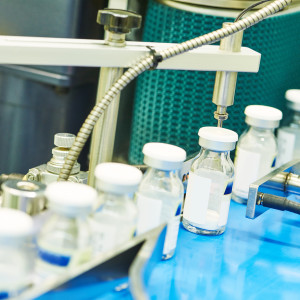“There’s a lot of money lying around on the sea bottom,” said Terry Armstrong, a Merritt Island treasure hunter who wrote two books on historic shipwrecks. That sentiment undoubtedly drives some to invest in treasure hunting, though according to several recent studies, it has never been profitable.
Profit would depend on the treasure being worth more than the cost of not only finding the sought-after treasure but also more than all of the costs incurred by all of the digs and dives where nothing turned up. In other words, finding that big haul is massively uncertain.
Much like hunting for buried treasure, investing in new drugs that must go through the FDA’s highly uncertain and expensive clearance process is a high-risk gamble with often little reward.
The chance of actually getting a drug approved is one in 5,000. There are many steps where a drug company can fail: preclinical testing; investigational New Drug Application; Phase I, II, III clinical trials; New Drug Application; and Phase IV studies.
Of course, some may want to try to cheat the odds by tilting the scales against public health. Many have recently heard of pharmaceutical executive Martin Shkreli raising the price of old drugs, but what is less well known is the evidence uncovered by Citizens for Responsibility and Ethics in Washington that he may have shorted the stock of a drug company that makes a drug for diabetes and then sent a letter to FDA requesting that the drug not be approved.
In any business, when there is that much uncertainty in whether or not a product will succeed, it would be expected that large rewards or losses go hand in hand with large uncertainty. If at each stage of the process, something may cause a reversal — meaning the investment will be lost — then that uncertainty will affect investment decisions. As Ben Bernanke put it, “High uncertainty and the possibility that new information will change project rankings depress current investment.”
Fortunately, as of right now, investment in new drugs is not depressed even with the low rate of approvals and the shenanigans surrounding those approvals. But there are both positive steps we can take to decrease the uncertainty and negative steps that might be taken that will decrease investment. The positive steps would be to remove some of the stages of approval that currently form the basis of government approval of drugs.
While ensuring that we have drugs that are safe, we can greatly reduce uncertainty and cost by separating effectiveness from the equation.
When the current drug approval regime was established 50 years ago, we might not have understood how unique people are when it comes to how drugs affect them individually, but we certainly know a lot about that today. This means that whether a drug will be effective for an individual, and at what dose, cannot be established by a clinical trial that groups people together.
Yet those clinical trials form the basis for the most expensive part of the FDA approval protocol, the Phase III trials. Trying to influence the FDA to not approve drugs at that stage, as Shkreli did with his letter, just adds to the uncertainty. Alteration of this protocol could rapidly expand our progress in the creation of new drugs.
It’s important to keep in mind that there is a danger that we could just as easily rapidly retard the progress we are making now by trying to impose price controls on drugs. How could any government body possibly have the knowledge necessary to know how to appropriately incentivize investors that take massive risks in investing in new drug discovery? In fact, price controls would adversely affect “the cost and quality of care, and thus patient well being.”
Rather than focusing on price controls as the way to ensure better quality products and care at a lower cost, the government needs to take a look at its own role in the system. By improving the approval process for drugs and medical devices, more Americans will have access to affordable care than ever before.

